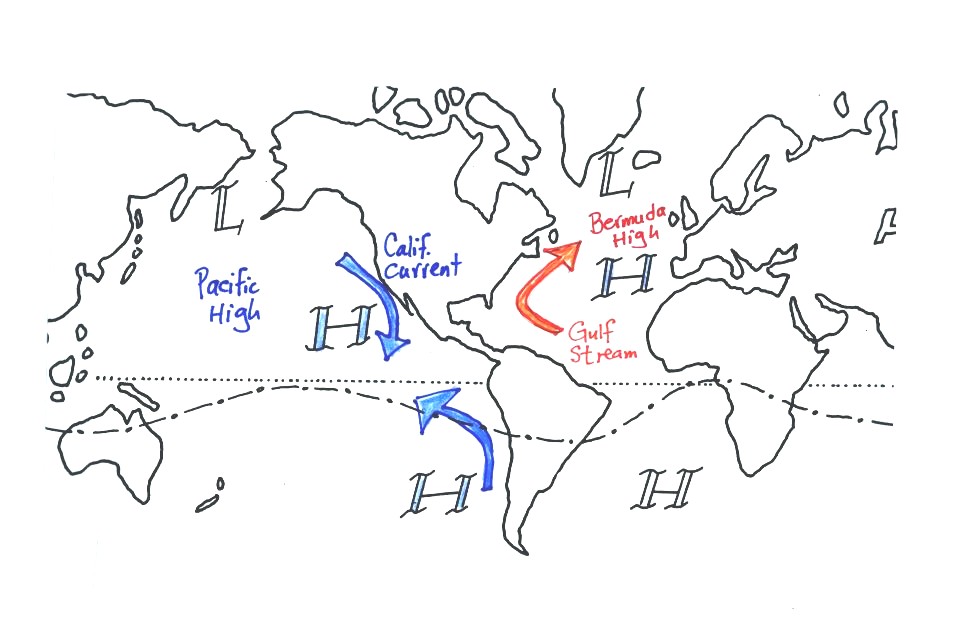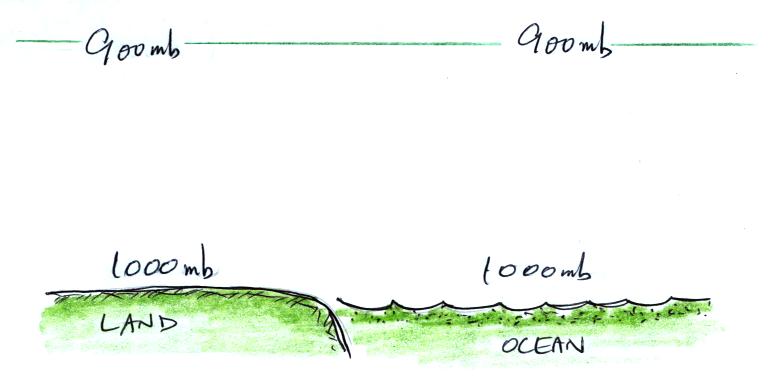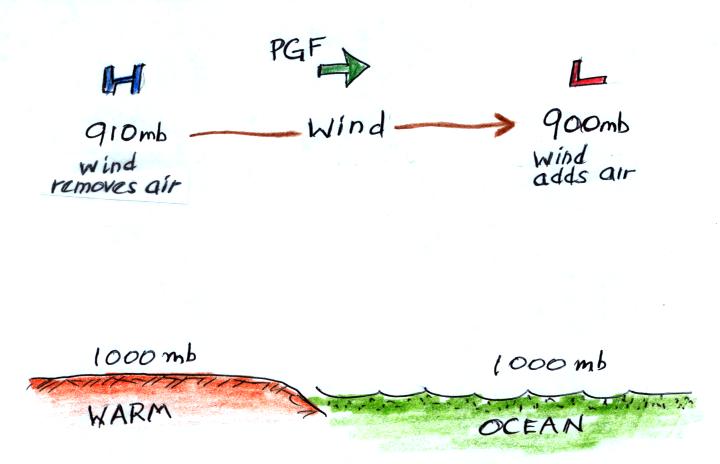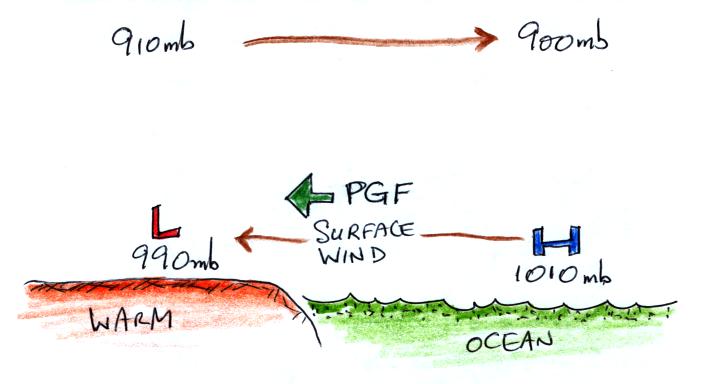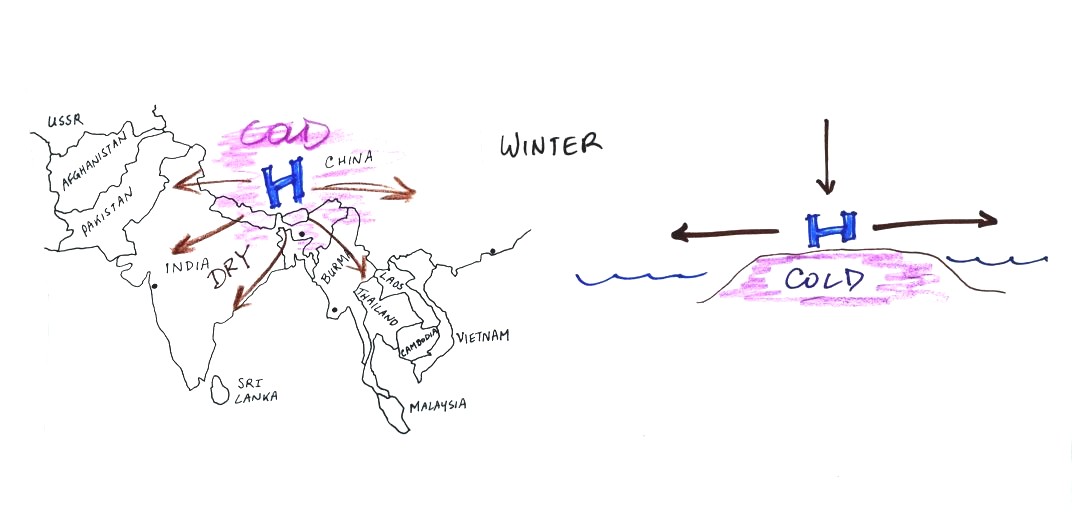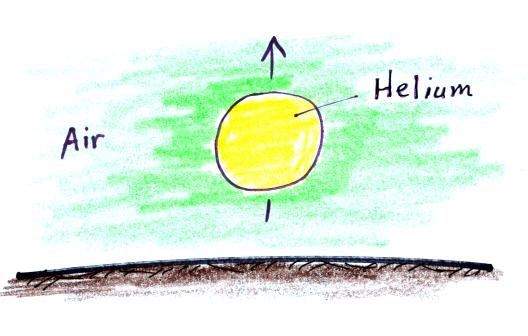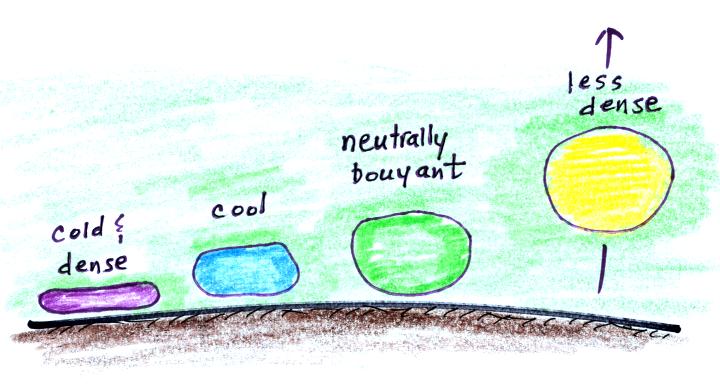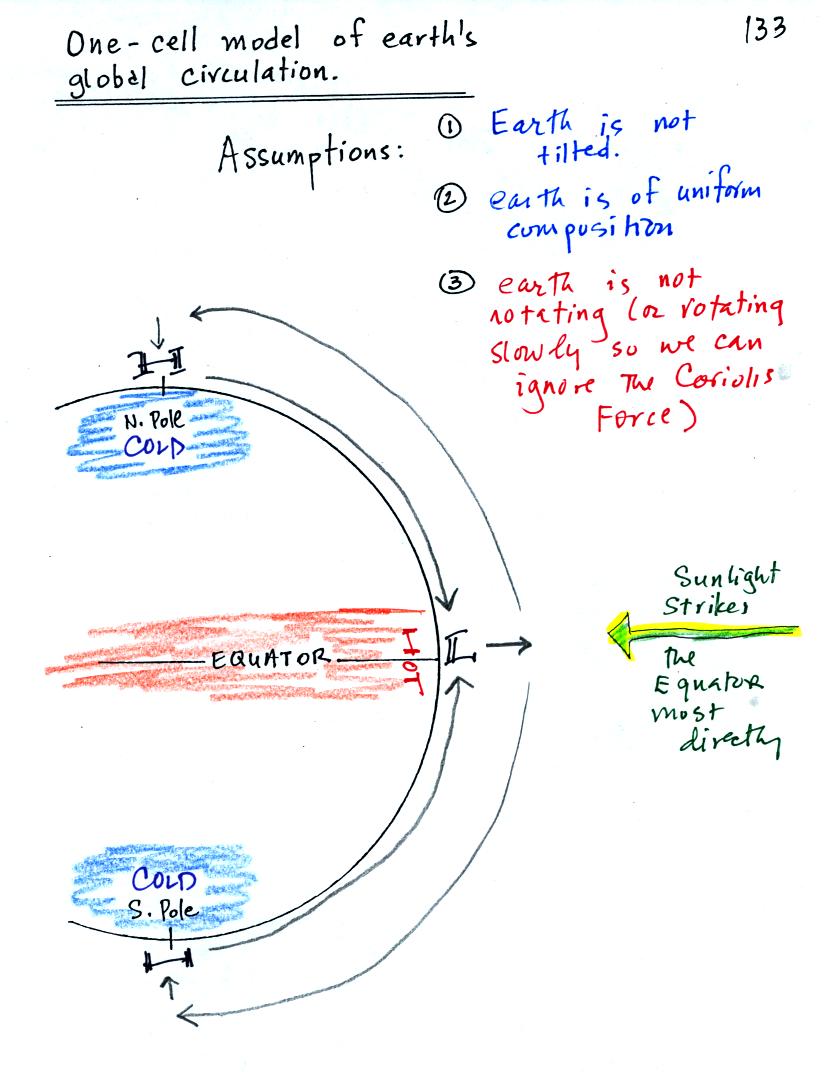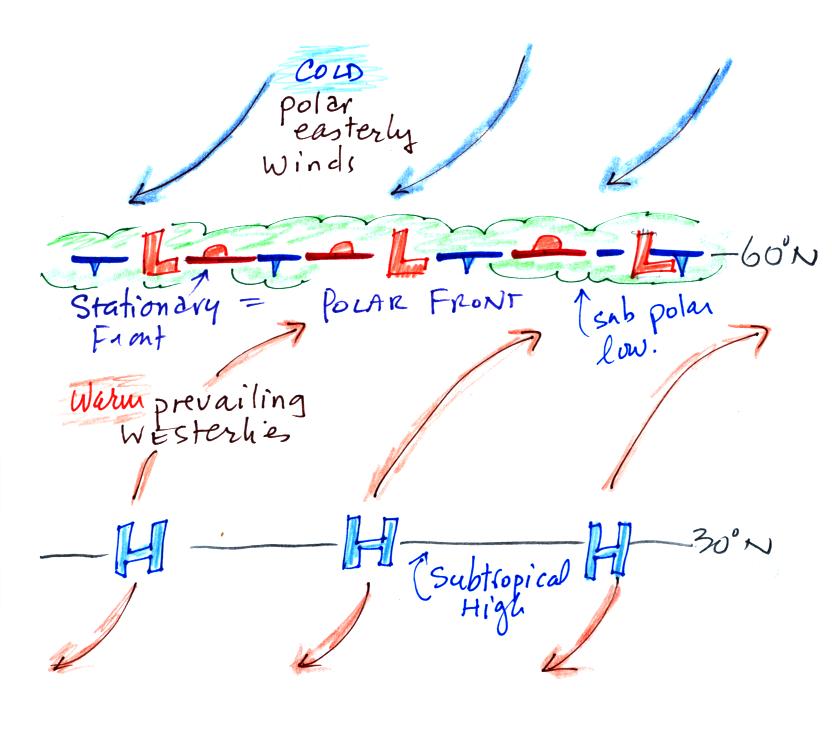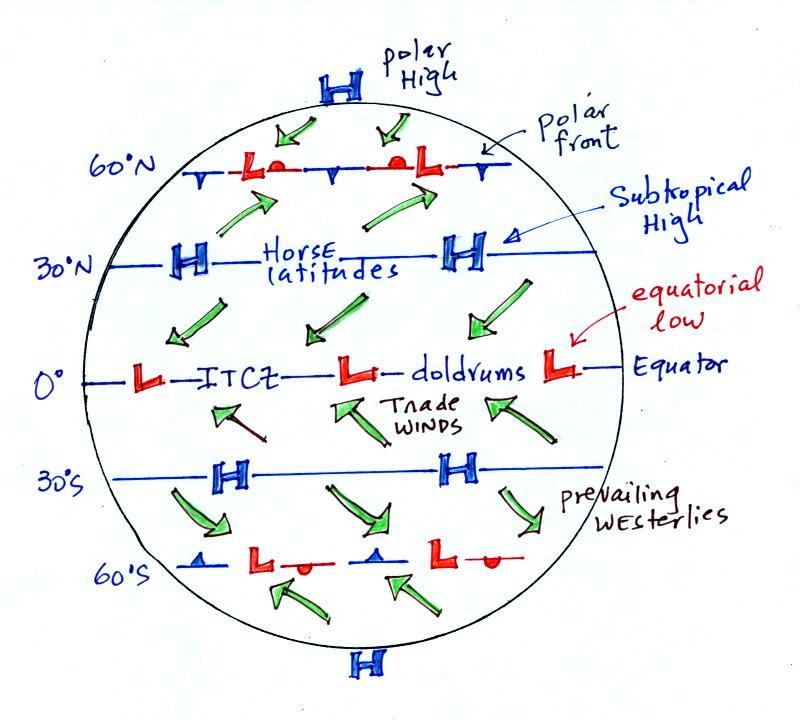Tuesday Nov. 16, 2010
click here to download today's notes in a more
printer friendly format.
3 songs from Janis Joplin before class today ("Try (Just A
Little Harder)", "Move Over", and "Maybe").
You should check out the videos on YouTube.
The 1S1P Assignment #2b reports were collected today.
That's it
for Assignment #2. There'll be one more assignment, with at least
two topics, coming soon. And there is already a new Bonus Assignment. Grading
of
the reports that have been turned in is underway.
The Optional
In-class
Assignment from last Tuesday was returned in class
today. Here are answers to
the assignment.
And finally the latest results from the Toilet Bowl Flushing
Experiment. 30 people observed Clockwise spin, 31 people reported
counterclockwise spin. And that's exactly how it should be.
The Coriolis force doesn't play a role in determining the direction of
spin for water draining from a sink or toilet (the PGF is much stronger
than the CF). Either direction should be equally likely.
The design and construction of the toilet itself determines the
direction of spin.
One of the MWF students asked what had happened to the "picture of
the day."
Here are some photos from the All Souls Procession.
The urn, containing notes of rememberance, is being lifted onto a
steel structure.
The urn is then set on fire.
Here are some much better photos
from the Arizona Daily Star.
Thermal circulations were the first topic we covered in class
today.
Differences
in temperature like you might find between a coast and
the ocean or between a city and the surrounding country side can create
horizontal pressure differences. The horizontal pressure gradient can
then produce a wind flow pattern known as a thermal circulation.
When dealing with relatively small scale circulations, the
pressure gradient for is often so much stronger than the Coriolis force
that the
Coriolis force can be ignored.
We will learn how thermal
circulations develop and then apply to concept to the earth as a
whole
in order to understand large global scale pressure and wind
patterns. You'll find this
discussed on p. 131 in the photocopied Class Notes.
We'll start here along a sea
coast. There aren't any temperature differences yet in this
picture, so the pressure at the ground and at some level above the
ground are the same over the land and over the ocean.
A beach will often become much warmer than the
nearby
ocean during
the day (the sand gets hot enough that it is painful to walk across in
bare feet). The warm ground will warm the air above. Pressure
decreases more slowly as you move upward through warm low density
air. As you move from the ground to the level of the green line
in the picture above pressure decreases 90 mb in the warm air and a
little more, 100 mb, in the cooler denser air over the ocean.
Here's another way of figuring out what happens. The warm air
expands pushing the 900 mb pressure level up. 910 mb pressure
moves in to take its place.
The temperature differences at the ground have created an upper
level pressure
gradient (pressure difference), higher pressure (910 mb) on the left
and lower pressure (900 mb) on the right. The resulting pressure
gradient force (PGF) causes air to start to blow from left to right.
The upper level winds (which remove air from the left side of the
picture and add it to the right) will affect the surface pressure
pattern.
Air leaving the left side of the picture
will lower the surface pressure (from 1000 mb to 990 mb). Adding
air aloft to the right side of the picture will increase the surface
pressure (from 1000 mb to 1010 mb). Surface winds will start to
blow from right to left.
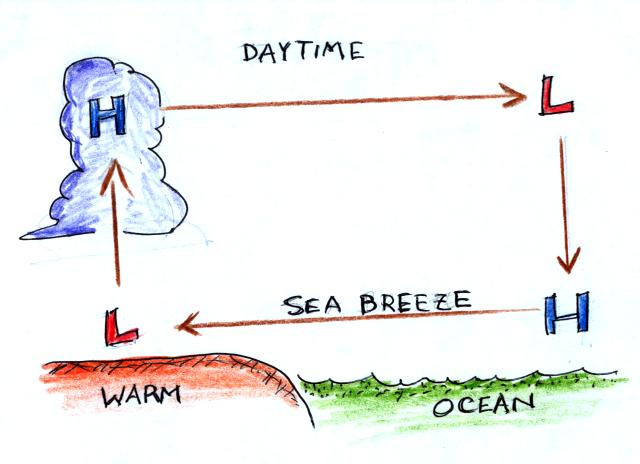
You can complete the circulation loop by adding rising air
above the
surface low pressure at left and sinking air above the surface high at
right. The surface winds which blow from the ocean onto land are
called a sea breeze (the name tells you where the winds come
from). Since this air is likely to be moist, cloud formation is
likely when the air rises over the warm ground. Rising air
expands and cools. If you cool moist air to its dew point, clouds
form (I'm not sure why I
colored the cloud purple in this picture).
It is pretty easy to figure the directions of the winds in a thermal
circulation without going through a long-winded development like we
just done. Just remember that warm air rises.
Draw
in
a
rising
air
arrow
above
the
warm part of the picture, then complete the loop.
At night the ground cools more quickly than the ocean and becomes
colder than the water (the water temperature didn't change at all in
the picture below). Rising air is found over the ocean
water because it is warmer than the land. The thermal circulation
pattern reverses
direction. Surface winds blow from the land out over the
ocean. This is referred to as a land breeze.

Here
are
some
additional
examples
of
thermal
circulations
or
large scale circulations that resemble
thermal circulations. This first example was covered in class.
Cities are often warmer than the
surrounding
countryside,
especially at night. This is referred to as the urban heat island
effect. This difference in temperature can create a
"country breeze." This will sometimes carry pollutants
from a factory outside the city back into the city or odors from a
sewer treatment plant outside of town back into town.
The
following figures weren't shown in class.
The Asian monsoon (monsoon refers to a seasonal change
in the direction of the prevailing winds) is a large scale circulation
pattern and is much more complex than a simple thermal
circulation. However you can
use the thermal circulation concept to get a general understanding of
what to expect at different times of the year.
In the summer India and SE
Asia
become warmer than the
oceans
nearby. Surface low pressure forms over the land, moist winds
blow from the ocean onshore, and very large amounts of rain can
follow. A map view (view from above) is shown at left, a
crossectional view is shown at right.
The winds change
directions in the
winter when the
land becomes colder
than the ocean.
You can
also use the thermal circulation to understand some of the basic
features of the El Nino phenomenon (you find a discussion of the El
Nino on pps 135-139 in the photocopied Classnotes).
First here is what conditions look like in the tropical Pacific
Ocean
in non-El Nino years (top and side views again)

Cold ocean currents
along the west coasts of N. America and S.
American normally converge at the equator and begin to flow westward
(see top view above). As the water travels westward it
warms. Some of the warmest sea surface waters on earth are
normally found
in the western Tropical Pacific. A temperature gradient becomes
established between the W. and E. ends of the tropical Pacific. The
crossectional view above shows the normal temperature and circulation
pattern found in the equatorial Pacific Ocean. You would
find surface high pressure in the east and low pressure in the
west. Note that the wind circulation pattern is the same as the
simple thermal circulation we studied above.
Every few years El Nino conditions occur and the cold
currents don't
make it to the
Equator. Warm water is carried from the western Pacific to the
eastern Pacific
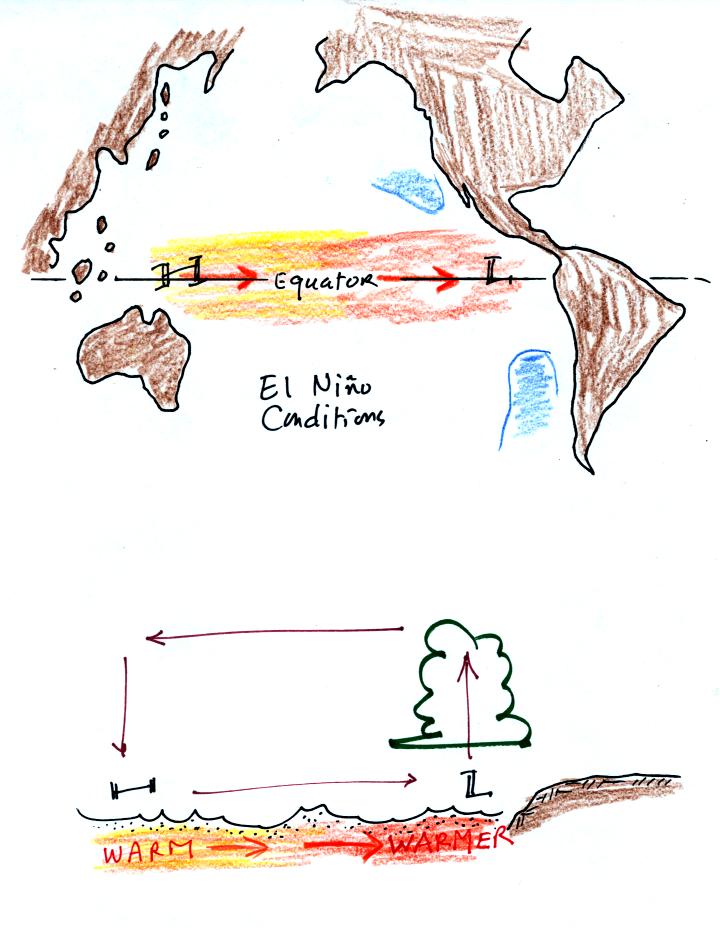
Now surface high
pressure is found in the west and surface low
pressure and rising air is found in the E. Pacific (the reversal in the
surface pressure pattern is referred to as the southern
oscillation). Indonesia and Australia often experience drought
conditions during El Nino events. In the desert SW we expect
slightly wetter than normal conditions (perhaps 20% wetter than
normal). Wetter conditions are also found in California and in
the SE US.
Next we did a demonstration that normally is done earlier in the
semester. It fits in well with what we will be covering
on Thursday about concerning thunderstorm development. I.e. air
will either rise or
sink depending on whether it is less dense or more dense
than the air around it.
The demonstration uses balloons filled with helium (see bottom of p. 54
in
the photocopied Class
Notes). Helium is less dense than air even when the
helium has the same temperature as the surrounding air. A
helium-filled balloon doesn't need to warmed up in order to rise.
We dunked the helium-filled balloon
in some liquid nitrogen to cool
it. The balloon shrinks in size, increasing the density of the
helium inside.
When
removed
from the liquid nitrogen the balloon didn't rise, the gas inside was
denser than the surrounding air (the purple and blue balloons in the
figure above). As the balloon warms and expands
its density decreases. The balloon at some point has the same
density as the air around it (green above) and is neutrally
bouyant. Eventually the balloon warms to room temperature,
becomes less dense that the
surrounding air (yellow) just as it was initially and floats up to the
ceiling. The helium will slowly leak out of the balloons and the
balloons will come back down at some point (often during someone else's
class).
The second main topic of the day: using
the
thermal
circulation
idea
to
learn
something
about
global
scale
pressure and wind patterns on the
earth. Ordinarily you couldn't apply a small scale phenomena like
a thermal circulation to the much larger global scale. However if
we make some simplifying assumptions, particularly if we assume that
the earth doesn't rotate or only rotates slowly, we can ignore the
Coriolis force and a thermal circulation could become established.
Some additional simplifications are also made and are listed below (p.
133 in the photocopied Classnotes). The figures are more
carefully drawn versions of what was done in class.
Because the earth isn't tilted, the incoming sunlight
shines
on the earth most directly at
the
equator. The equator will become hotter than the poles. By
allowing
the
earth
to
rotate
slowly
we
spread
this warmth out in a belt
that circles the globe at the equator rather than concentrating it in a
spot on
the side of the earth facing the sun. Because the
earth is of uniform composition there aren't any temperature
differences created between oceans and continents.
You can see the wind
circulation pattern that would develop. The term one cell
just means there is one complete
loop
in the northern hemisphere and another in the southern hemisphere.
Next we will remove the assumption concerning the rotation of the
earth. We won't be able to ignore the Coriolis force now.
Here's what a computer would predict you would now see
on
the earth. Things are pretty much the same at the equator in the
three cell and one cell models: surface low pressure and rising
air. At
upper levels the winds begin to blow from the equator toward the
poles. Once headed toward the poles the upper
level winds are deflected by the Coriolis force.
There end up being three closed loops in the northern and in the
southern hemispheres. There are surface belts of low
pressure
at the equator (the equatorial low)
and at 60 degrees latitude (the subpolar
low). There are belts of high pressure (the subtropical high) at 30
latitude and high pressure centers at the two poles (the polar highs).
We will look at the 3-cell model surface features (pressure belts and
winds) in a little more detail because
some of what is predicted, even with the unrealistic assumptions, is
actually found on the earth.
Here's a map view of the region between 30 S and 30 N latitude.
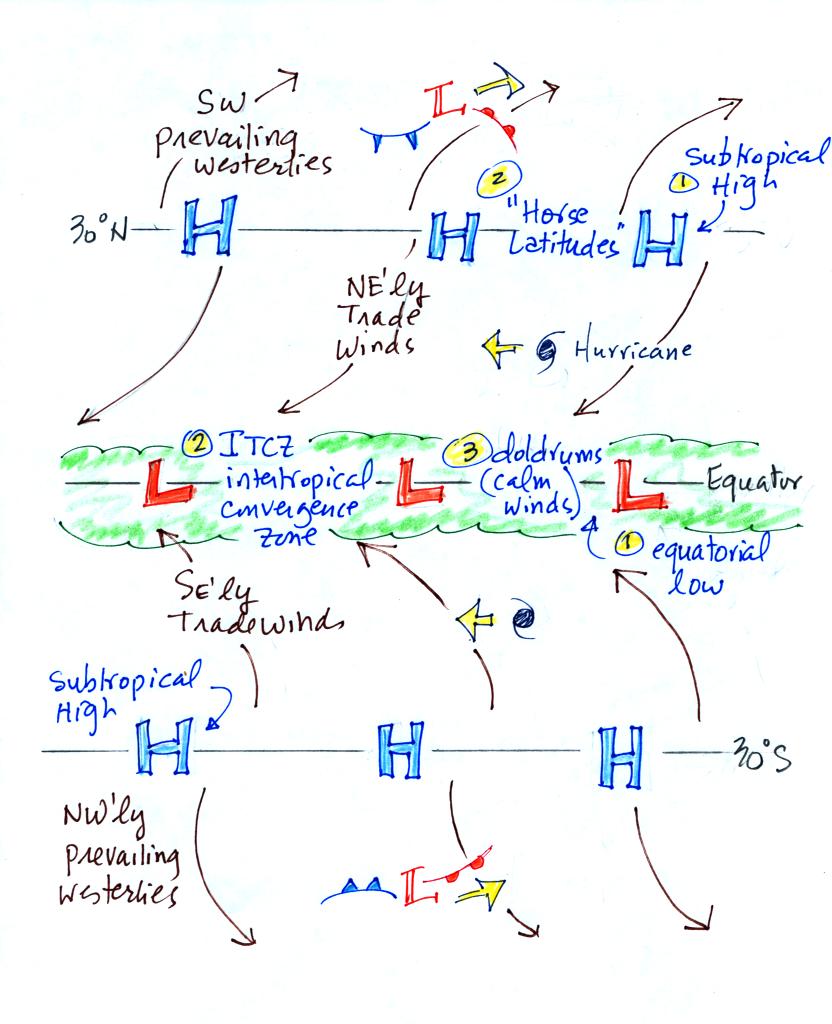
There's a lot of information on this picture, but with a
little study you should be able to start with a
blank
sheet of paper and reproduce this figure. I would suggest
starting at the equator. You need to remember that there is a
belt of
low pressure found there. Then remember that the pressure belts
alternate: there are belts of high pressure at 30 N and 30 S.
Let's start at 30 S.
Winds will begin to
blow from High pressure at 30 S toward Low pressure at the
equator. Once the winds start to blow they will turn to the left
because of the Coriolis force. Winds blow from 30 N toward the
equator and turn to the right in the northern hemisphere (you need to
turn the page upside down and look in the direction the winds are
blowing). These are the Trade
Winds (northeasterly trade winds north of the equator and
southeasterly trades south of the equator). They converge at the
equator and the air there rises (refer back to the crossectional view
of the 3-cell model). This is the cause of the band of clouds that you
can often see at or near the equator on a satellite
photograph.
The Intertropical Convergence Zone or ITCZ is another name for the
equatorial low pressure belt. This region is
also referred to as the doldrums because it is a region where surface
winds are often weak. Sailing ships would sometimes get stranded
there hundreds of miles from land. Fortunately
it is a cloudy and
rainy region so the sailors wouldn't run out of drinking water (they
might well have run out of rum though which they probably felt was
worse).
Hurricanes form over warm ocean water in the subtropics between the
equator and 30
latitude. Winds at these latitudes have a strong easterly
component and hurricanes, at least early in their development, move
from east to west. Middle latitude storms found between 30 and 60
latitude, where the prevailing westerly
wind belt is found, move from
west to east.
You find sinking air, clear skies, and weak surface winds associated
with the subtropical high pressure belt. This is also known as
the horse latitudes. Sailing ships could become stranded there
also. Horses were apparently either thrown overboard (to conserve
drinking water) or eaten if food supplies were running low. Note
that sinking air is associated with the subtropical high pressure belt
so this is a region on the earth where skies are
clear (Tucson is
located at 32 N latitude, so we are strongly affected by the
subtropical high
pressure belt).
The winds to the north of 30 N and to the south of 30 S are called the
"prevailing westerlies."
They blow from the SW in the northern hemisphere and from the NW in the
southern hemisphere. The 30 S to 60 S latitude belt in the southern
hemisphere is mostly ocean. Because there is less friction over
the oceans, the prevailing westerlies there can
get strong, especially in the winter. They are sometimes referred
to as the "roaring 40s" or the "ferocious 50s" (the 40s and 50s refer
to the latitude belt they are found in).
Here's the other surface map, it's
a little simpler (it's a redrawn version of what was done in
class).
We're just looking from about 30 N to a little bit past 60 N.
Winds
blowing north from H
pressure at 30 N toward Low pressure at 60 N turn to the right and blow
from the SW. These are the "prevailing westerlies."
The polar easterlies are cold winds coming down from high pressure at
the north pole. The subpolar low pressure belt is found at 60
latitude. This
is also a convergence zone where the cold polar easterly winds and the
warmer prevailing westerly winds meet. The boundary between these
two different kinds of air is called the polar front and is often drawn
as a stationary front on weather maps. A strong current of winds
called the polar jet stream is found overhead. Strong middle
latitude storms will often form along the polar front.
Here's a map that shows all of the
3-cell model surface features.
The following material wasn't covered in class. We'll
review
it quickly at the beginning of class on Thursday.
The 3-cell model predicts subtropical belts of
high
pressure near
30
latitude. The 3-cell model makes some unrealistic assumptions
such as requiring that the earth be of uniform composition. In
the real world we don't find belts of high pressure at 30 latitude but
there are large circular centers of high
pressure. In the northern hemisphere the Bermuda high is found
off the east coast of the US, the Pacific
high is positioned
off the
west coast. High pressure centers are found east and west of
South America in the southern hemisphere. Since I can't remember
their names, you don't have to either.
Circular low pressure centers, the Icelandic low (off the east
coast
near Iceland and Greenland in the picture below) and
the Aleutian low (off the west coast near the southern tip of Alaska),
are found near 60 N. There's very little land in the southern
hemisphere between 30 S and 60 S. There is a belt of low pressure
found there just as is predicted in the 3-cell model. Names like
"roaring 40s" and "ferocious 50s" refer to strong surface winds that
develop near 40 and 50 degrees southern latitude in the winter.
